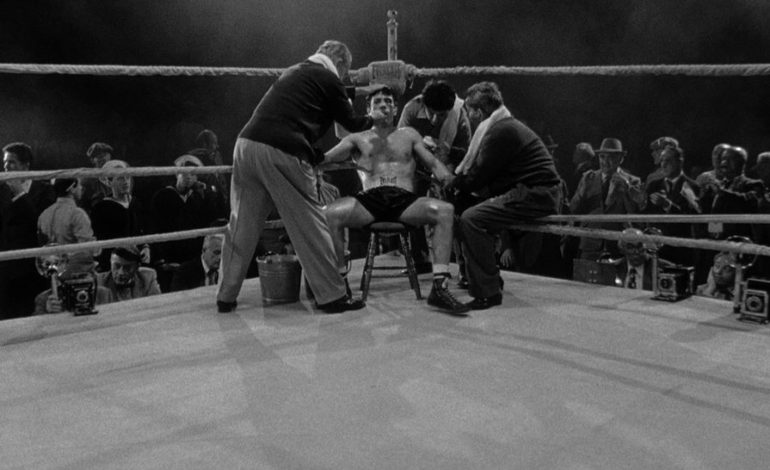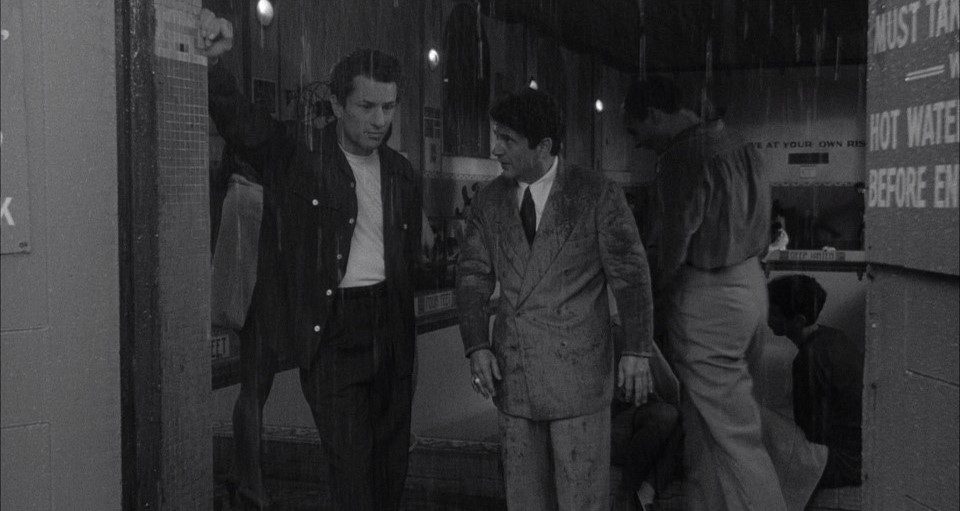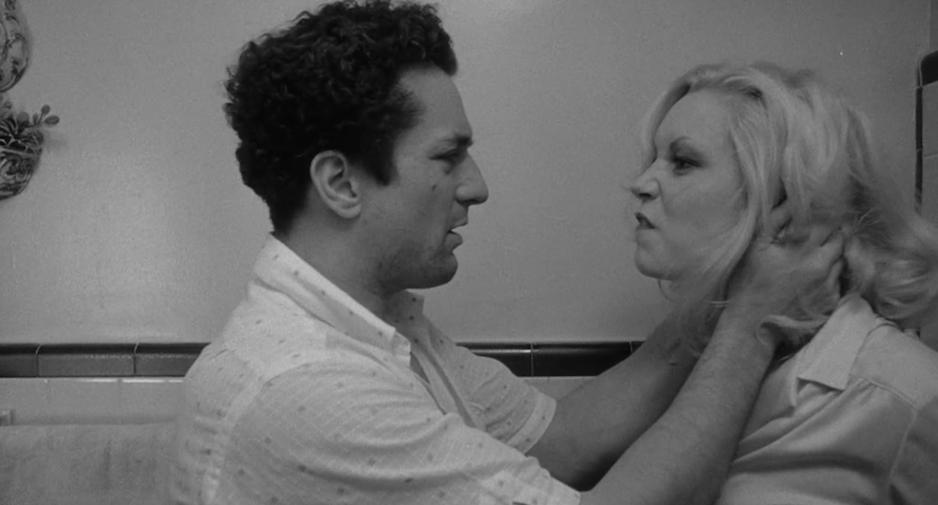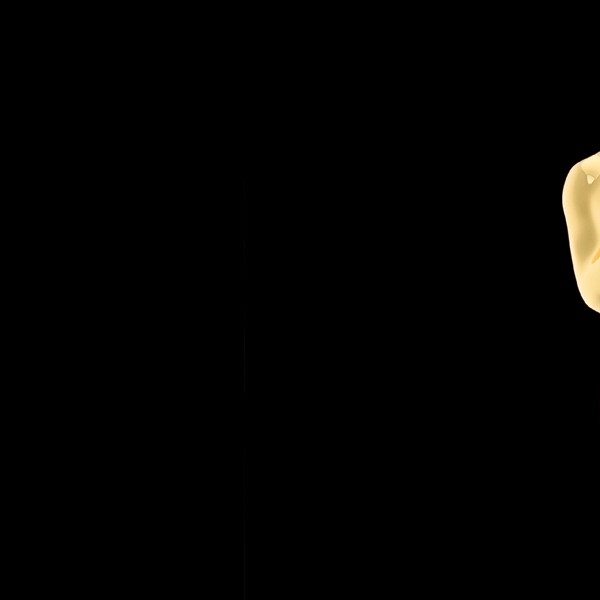

Need a switch up from your normal binge-watching lineup of the modern day quarantine? Netflix has not only been upping their game with TV and original content during this period, but also slowly pumping classic movie after classic movie into their roster. Raging Bull is no different, a Scorsese picture about grit, anger and force that takes the viewer on a rollercoaster ride that mixes toxic masculinity with severe insecurity, a trope that I believe is explored in almost all of Scorsese’s most notable pictures.
Said by many to hardly be a boxing movie, the film follows Robert De Niro as Jake La Motta, a real life professional middleweight boxer turned comedian/poet. He was historically nicknamed the “Raging Bull” for the beatings that he would lay on opponents in the ring. Though these beatings and boxing accomplishments are not shied away from, I concur with the previous statement about this film. This isn’t a movie about boxing, but rather a character study that follows the origins and manifestations of La Motta’s rage, jealousy and suspicion. Tonally it takes place in a very different time, one where the power of being male, especially a physically alpha male, held quite the precedent if one were to assert themselves accordingly and hang with the right people (i.e. mob adjacents), even guaranteeing you a win in the ring. What’s a Scorsese movie without some mob ties or a sequence at the Copacabana?


As La Motta’s career surges, however, we see his personal life begin to crumble around him. De Niro delivers an Oscar winning performance as La Motta, capturing the boxer’s childlike insecurity within an extremely volatile and violent grown man. He has no trust in his beautiful and young (for his age) wife, which ultimately spirals into a self-fulfilling prophecy of marital sabotage. A truly unlikeable character, it seems almost like magic that the film grabs the viewer and invests them emotionally into La Motta’s life.
Based on the autobiography by Jake La Motta himself, De Niro was the one to bring the book to Scorsese (sounds familiar). Originally, Scorsese wanted nothing to do with it, in part due to its sporting world basis. Sports were never Scorsese’s cup of tea in real life and cinematically, having grown up with complications involving asthma that prevented him from going outside as a kid. This in itself is quite meta given the irony of the eventual product, a boxing movie that isn’t about boxing. Ultimately, Paul Schrader and Mardik Martin wrote the screenplay and it was off to the races. But the film’s narrative “magic” can be easily traced to Scorsese’s mastery of cinematic technique and the knockout performances from Raging Bull’s two leads. Joe Pesci, another go-to Scorsese ingredient, plays La Motta’s brother and coach/protégé “Joey” in a role whose motivations and decisions feel just as mysterious, complex and rooted in insecurity as his older brother’s. But make no mistake: his actions play out much differently, and to his brother’s demise.
Scorsese, being the mastermind he is, brings naturalism to his stylistic approach of the world of boxing. Despite not being a “boxing” movie, he still manages to bring a whole new look to the table for boxing films of the time, or even since. Fighting sequences feel (for lack of a better term) Scorsese-esque and I’m sure, at the time, presented themselves as even more realistic and invasive than similar sports scenes do today. There’s a great and essential, practical use of montage in the film that shows where the true story lies. As we see La Motta trail blaze his path in the ring with still shots over several fights, we are intercut into home movie style footage of the progression of La Motta’s home and personal life. The lack of dialogue in Raging Bull does not mean a lack of substance. It’s all there in body language.


In moments that don’t explicitly explain the motivation driving La Motta or other characters, we can find it in the actors’ performances. De Niro, as previously mentioned, won an Oscar for this role, showing dedication and conviction by gaining 60 pounds to play La Motta in his later more fringe years. Seeing the physical transformation of De Niro is already strong enough, but adding the mastery layer of acting on top, you got yourself quite the dynamic character. I like to think this paved the way for actors moving forward to test their dedication to character involving weight gain and loss- i.e. your Christian Bales of the world.
Shot in black and white for a multitude of reasons that can be pawned off to what I like to call “Scorsese lore,” Raging Bull stands out amongst Scorsese’s other work for reasons both good and bad. Historically knocked for its lack of dramatic structure, Raging Bull feels much more like following a stream that eventually builds from a calm flow to a crashing current. Where it lacks in common systematic biographical overview, I believe it makes up for it in poetics and overall artistry.
Verdict: 4 out of 5 Stars
It’s by no means Scorsese’s greatest work, but I believe Raging Bull was never meant to be. There are without a doubt moments that didn’t age well, both in part to the filming approach and quite frankly the heavy subject matter involving domestic violence and gender inequality. But this movie is meant to be unapologetic, providing the viewer a deep cut into the life of an unstable boxer whose career had more than a few open cuts and wounds, both physically and emotionally.
Now given our world’s very sensitive creative pallet for mainstream movies, I would love to see an alternate universe where Raging Bull was first released today. Its Netflix release acts as a reintroduction of sorts to a new generation of movie watchers, and I hope it’s appreciated as it should be: a work of art.

